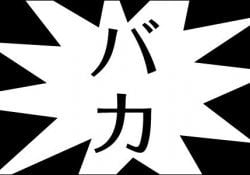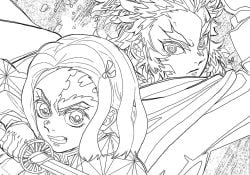Kusanagi no Tsurugi, or as it is more commonly called, Kusanagi. This is a legendary Japanese sword, as well as being one of the three sacred treasures of the Imperial Regalia of Japan. This sword is involved with tales and various types of mysticism.
But the important thing is that she is revered and adored. Whether for its history, or for its importance in the country's culture. In folklore, the sword represents the virtue of valor. Just like we have other articles about the other sacred treasures, today it's time for the holy sword. Yasakani no magatama, Yata no Kagami.
For those who haven't seen it yet, I recommend you take a look at the articles on The Sacred Mirror and the Sacred Jewel of Japan. In this article we will talk about some beliefs and about some legends involving the Kusanagi sword. So let's get down to business.
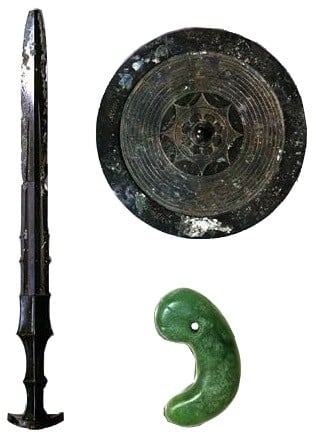
Índice de Conteúdo
The History of the Kusanagi Sword
The history of Kusanagi no Tsurugi comes from a legend, described in the main storybooks of Japan. According to Kojiki, the god Susanoo found a family of kunitsukami, "earth gods", in Izumo Prefecture. This family was in mourning, and was led by the land god Ashinazuchi.
So Susanoo decided to ask Ashinazuchi the reason for the grief. Soon, the god told him that his family was being ravaged by the fearsome Yamata-no-Orochi. The latter was an eight-headed, eight-tailed Koshi serpent. Which had already consumed seven of the family's eight daughters. Already on the present occasion, the creature was coming to consume the last daughter, Kushinada-hime.
Susanoo investigated the creature and, after an abortive encounter, returned with a plan to defeat it. In return, he asked for Kushinada-hime's hand in marriage, which was accepted by the family. Afterwards, he temporarily turned her into a comb to keep him company during battle. Soon after, he detailed his plan in stages.
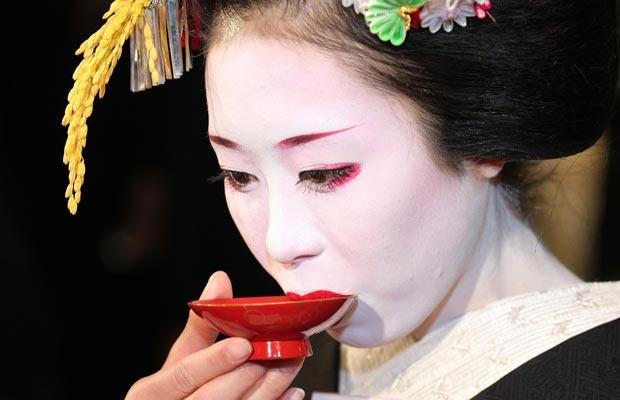
He instructed that eight vats of sake (rice wine) were prepared. They were to be placed on individual platforms positioned behind a fence with eight gates. Each platform would have a loot barrel situated behind each gate.
The monster took the bait and placed one of its heads on each gate. With this distraction, Susanoo attacked and killed the beast with his sword Worochi no Ara-masa. He cut off each head and then proceeded to the tails. On the fourth tail, he discovered a large sword inside the serpent's body.
To this sword he named Ame-no-Murakumo-no-Tsurugi. But he didn't decide to stay with her. He presented the sword to the goddess Amaterasu, his sister, to settle an old grievance.
The name change of the Kusanagi sword
During the reign of the twelfth Emperor, Keikō, Ame-no-Murakumo-no-Tsurugi was given to a great warrior. This warrior's name was Yamato Takeru. The sword was presented to him as part of a pair of gifts given to him by his aunt, Yamatohime-no-mikoto.
Yamato Takeru was once lured to an open pasture during a hunting expedition by a treacherous warrior. The lord shot fire arrows to light the grass and trap Yamato Takeru in the field. Hoping he would burn to death. The warrior also killed the warrior's horse to prevent his escape.
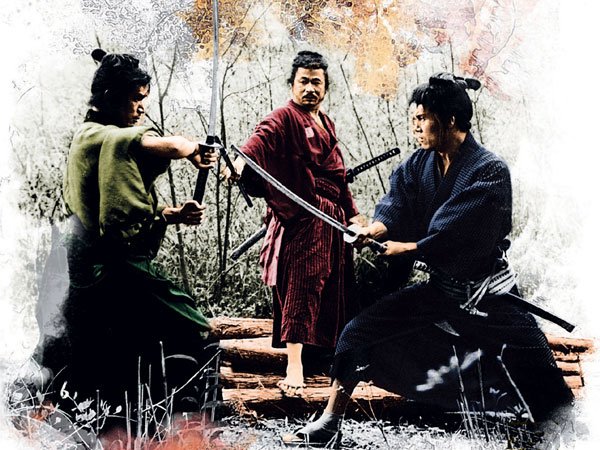
Desperately, Yamato Takeru used Ame-no-Murakumo-no-Tsurugi to cut the grass and remove fuel from the fire. However, in doing so, he discovered that the sword allowed him to control the wind. Taking advantage of this magic, Yamato Takeru used his other gift and increased the fire towards the lord and his men.
Furthermore, he used the sword-controlled winds to sweep fire towards them. In triumph, Yamato Takeru renamed the sword Kusanagi-no-Tsurugi ("Grass Cutting Sword"). Eventually, Yamato Takeru got married and later died in battle against a monster. For he ignored his wife's advice to take the sword with him.
Speculations about the kusanagi sword
Kusanagi is reportedly kept at Atsuta Shrine, but is not available for public viewing. Furthermore, its existence cannot be confirmed. During the Edo period, various repairs and maintenance were carried out at the Atsuta Shrine. Which includes replacing the sword's outer wooden case.
Shinto priest Matsuoka Masanao claimed to have been one of several priests to have seen the sword. He stated:
“A stone box was inside a 150 cm long wooden box, with red clay wedged into the opening between them. Inside the stone box was a hollow trunk of a camphor tree, acting as another box, with a lined interior. Above that, a sword was placed, and there was also red clay between the stone box and the camphor box.
The sword was about 82 centimeters long and its blade resembled a calamus leaf. The middle of the sword had a grip thickness of about 18 centimeters with a herringbone appearance. The sword was modeled in a well-preserved metallic white color.”
After witnessing the sword, the high priest was banished and the other priests, except Matsuoka, died of strange diseases. The above account comes from the sole survivor, Matsuoka.
The article is still halfway through, but we recommend also reading:
What's your theory about Kusanagi?
The current state of the Kusanagi sword, or even the existence itself as a historical artifact cannot be confirmed. We can blame the Shinto priests' refusal to show the sword. Or even the unreliable nature of its historical references.
All this, only makes the speculations and the curiosity of the people increase more and more. The sword's last appearance was when Emperor Akihito ascended the throne. At the enthronement ceremony, the sword, as well as the Yasakani no Magatama jewel and the Emperor's Seal and State Seal were wrapped in packages.
But anyway, what do you think about this subject? Do you have any theories? Leave your comments below, also leave your questions, suggestions or something like that. Also, share and like the website page on social media, it helps a lot. Anyway, thanks for reading the article so far, until next time.

